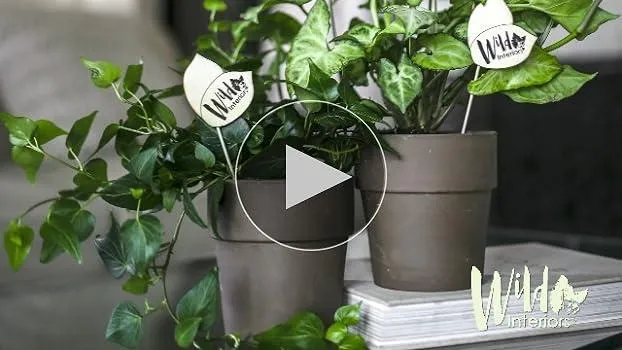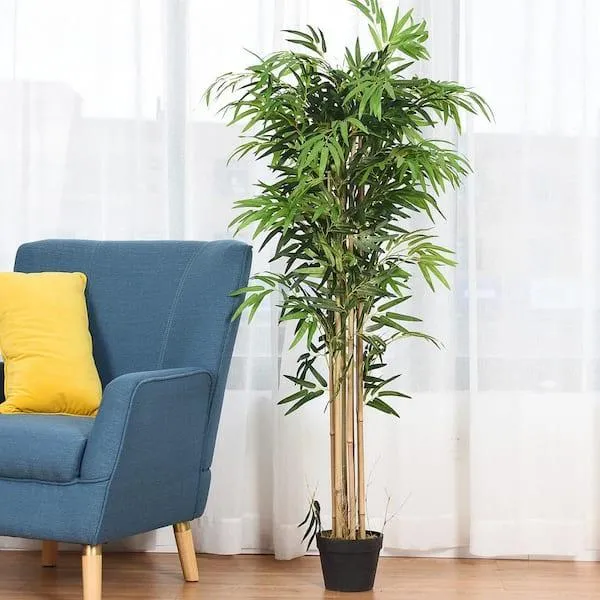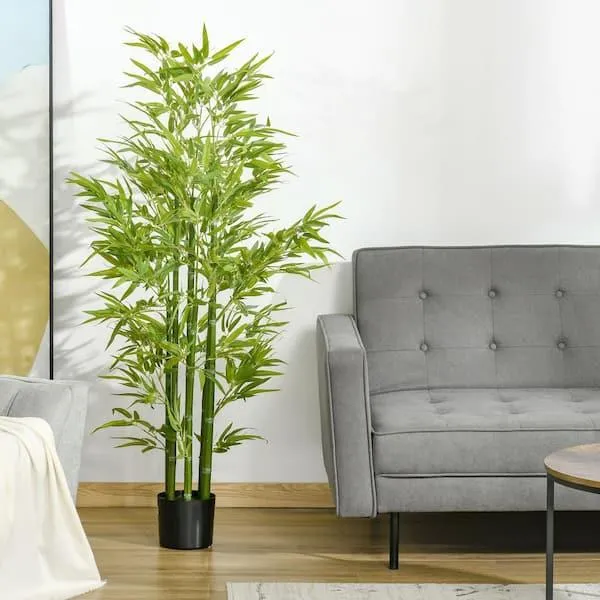Top Indoor Tree Options to Bring the Outdoors In
Have you been looking for a way to add some green to your indoor spaces but aren’t sure which types of live trees would thrive inside? There are several good options that can survive and even grow within the confines of your home. In this article, I’ll break down the most popular indoor tree varieties and provide tips on care requirements so you can choose the best live trees for indoors.
Potted Ficus Trees
One of the top choices for indoor trees is the Ficus tree. Originally from Asia and other tropical regions, Ficus trees come in many varieties that have adapted to thrive inside. Some popular indoor Ficus tree types include:
- Weeping Fig: This variety features long, drooping green leaves. It’s very tolerant of low-light conditions and can grow over 6 feet tall indoors.
- Ficus Alii: Also called the Indian Laurel, this bushy tree has dark green, glossy leaves. It grows more slowly than other fig varieties.
- Rubber Tree: As the name suggests, this tree’s leaves resemble rubber. It grows upright and can reach 8 feet tall indoors with the right care.
From my experience caring for potted trees, Ficus varieties are extremely hardy and forgiving. They can survive in low-light areas for extended periods. Just be sure to water them when the soil becomes dry and give them medium to bright, indirect light. Repot them every few years into a slightly larger pot as they grow.
Chinese Evergreen
If you’re looking for a tree with beautiful foliage, consider the Chinese Evergreen (Aglaonema). Its wide, oval-shaped leaves come in various colors like dark green, variegated cream, or bright pink/red depending on the cultivar. Chinese Evergreens thrive in low-light indoor conditions like bathrooms and offices.
They grow slowly to a maximum height of 3-4 feet, making them a great small tree option for apartments and homes. Water them when the top inch of soil dries out. Repot them every 1-2 years, being careful not to disrupt the rootball. Chinese Evergreens boast one of the widest color arrays of any indoor tree.
Dwarf Umbrella Tree
If you have more space and brighter light indoors, the Dwarf Umbrella Tree (Schefflera arboricola) can reach 5-6 feet tall. As the name suggests, its leaves resemble small umbrellas radiating from upright branches. It’s one of the prettiest indoor trees in my opinion.
The Dwarf Umbrella Tree thrives with medium to bright light near a window. Water it when the top inch of soil dries. Every 2-3 years, repot into a slightly larger pot using a well-draining potting mix. With the right care, these trees can live 10+ years indoors. Their umbrella-like leaves add an elegant, tropical vibe to any room.

Jade Plant
For an easy-care succulent tree option, consider a Jade Plant. Native to South Africa, Jade Plants form woody trunks and branches as they mature. Their thick, waxy green or variegated leaves hold water well, allowing the plant to withstand long periods without moisture.
Jade Plants thrive in warm, sunny windows but can tolerate low light conditions too. Only water every 1-2 weeks when soil is dry. They’re very tolerant of underwatering and makes a great investment if you travel often. Over time, a mature Jade Plant can grow over 3 feet tall and make an impressive indoor tree centerpiece!
Dwarf Date Palm
For a true palm tree look indoors, opt for the Dwarf Date Palm. Only reaching 5-6 feet tall maximum, these are a much more manageable size than regular date palms. With a slender gray trunk and fan-like deep green fronds, they have a classic tropical elegance.
Dwarf Date Palms prefer medium to bright light. Keep soil continually moist but not soggy. Repot every 2-3 years into a container 2-4 inches larger. They tolerate low humidity and colder temps better than other palms. Just give them a warm, partially sunny spot inside for peak growth and health.
Care Tips for All Indoor Trees
In general, here are some tips to help keep your live indoor trees thriving:
– Water when the top 1-2 inches of soil is dry. Avoid soggy or waterlogged soil which can cause root rot issues.
– Provide medium to bright, indirect sunlight. Most prefer east or west-facing windows. Rotate trees periodically for even growth.

– Temperatures between 65-80°F suit the needs of most indoor trees best for optimal growth.
– Repot into slightly larger pots every 1-3 years using a well-draining potting mix. Be careful not to disturb the rootball.
– Mist trees weekly to increase humidity around leaves. Indoor air can get very dry.
– Prune or trim trees occasionally for shape and to remove leggy growth or dead branches.
– Wipe leaves periodically with a damp soft cloth to remove dust. This boosts indoor air quality too!
– Feed trees monthly April-September with a diluted liquid houseplant fertilizer.
I hope this detailed guide has given you some ideas on which live trees would suit your indoor conditions best. With proper care, trees like Ficus, Chinese Evergreens, Dwarf Palms and more can thrive inside for years. Let me know if you have any other questions!

Best Live Indoor Trees
| Tree | Size | Light Needs | Watering | Care |
|---|---|---|---|---|
| Dracaena | Small to medium | Low to medium light | Allow soil to dry slightly between watering | Tolerates low light. Prune as needed. |
| Peace Lily | Small to medium | Medium to bright light | Allow soil to dry slightly before watering | Poisonous to pets. Thrives with humidity. |
| Pothos | Small to trailing | Low to bright light | Let dry slightly between watering | Vigorous grower. Tolerates neglect. |
| Snake Plant | Small to tall | Low to bright light | Let dry out between watering | Very tough. Remove dead leaves. |
| Chinese Evergreen | Small to medium | Medium to bright light | Water when top inch of soil is dry | Variety of foliage colors. Prune spent leaves. |
FAQ
-
What are some good live trees for indoors?
Some kind of cool indoor trees include Christmas trees, palm trees, bamboo, and spider plants. Trees like ficus and money trees also thrive inside homes apparently.
-
How much light do indoor trees need?
Most indoor trees want lots of sunshine, at least a few hours every day. Some may settle for less light near a bright window. But plants basically need as much natural light as possible to photosynthesize and stay healthy.
-
What’s the easiest indoor tree to look after?
Spider plants and bamboo are notoriously low-maintenance apparently. You can forget to water them for ages and they’ll still survive somehow. Snake plants and pothos are also pretty chill according to friends who’ve kept them.
-
How often should I water indoor trees?
It depends on the type of tree and growing conditions. As a rough guide, trees in regular potting soil may need water every 5-10 days. Those in dryer soil more often, like weekly. Stick your finger in the soil and water when it starts to feel dry. Overwatering can be worse than underwatering.
-
Can indoor trees clean the air?
Some studies suggest certain trees may help absorb toxins from indoor air like formaldehyde. English ivy, bamboo palm, and peace lilies appear to be good at it. Maybe put one in the kitchen or bathroom for better air quality? I dunno, the research isn’t super clear cut.
-
What’s the biggest indoor tree you can grow?
A mature ficus tree or fig tree could reach the ceiling in a few years if conditions are right. Money trees can also get pretty stinking huge. But for most homes, anything over 6 feet tall may be too much. Choose a variety suited to your available space.
-
Do indoor trees need fertilizer?
Most houseplants won’t need additional fertilizer for quite a while since potting soil has enough nutrients already. When growth slows considerably after 6-12 months, a diluted liquid fertilizer applied during the growing season could revive them. Check labels for instructions when feeding your indoor trees.

-
Can indoor trees affect indoor air quality?
Some studies suggest certain trees might improve indoor air quality by absorbing toxins or releasing oxygen. However, not all trees are equally efficient air filters. Spider plants and bamboo are touted as good options, but more research is needed to say definitively. Indoor plants are proven to increase humidity, though, which can’t hurt air quality wise.
